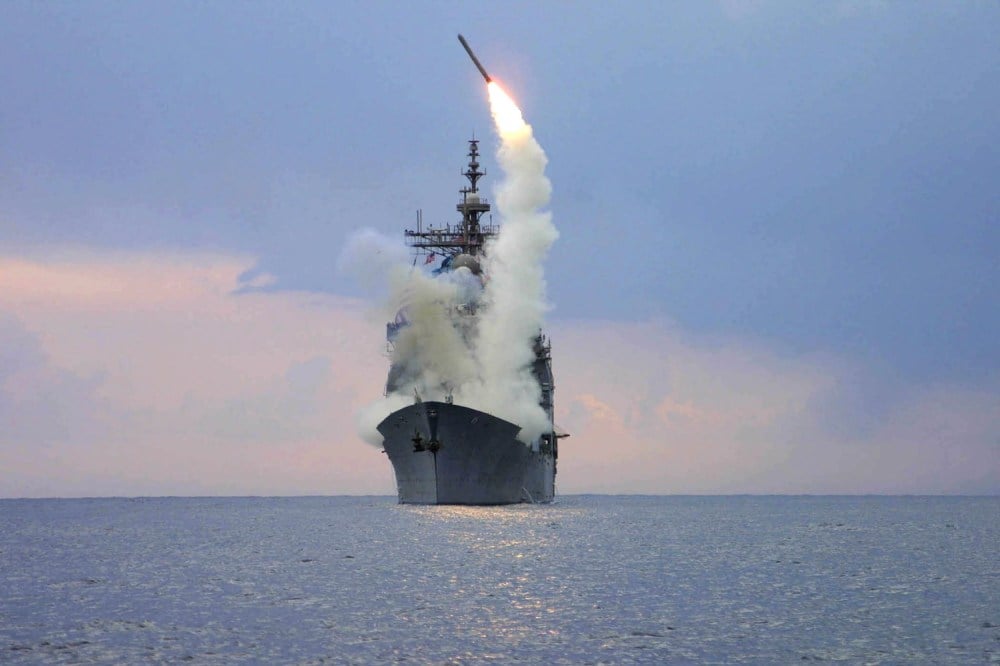Less than two months after a cordial summit with Russian President Vladimir Putin in Alaska, the White House is considering sending Ukraine long-range Tomahawk missiles, a move that Putin called a “completely new stage of escalation” on Thursday.
Sending the powerful weapons—which could reach Moscow—would mark another major political shift from an administration that until recently appeared skeptical of Ukraine’s chances of winning the war against Russia.
But sending them fits well into both Ukrainian and U.S. military strategies, according to experts, providing Kyiv with an extra boost to its so far successful strategy of targeting Russian oil while impacting U.S. weapons stocks as little as possible.
Speaking on Sunday, U.S. Vice President J.D. Vance said the United States was “looking at” selling the missiles to Ukraine, following reports that Ukrainian President Volodymyr Zelensky had asked the United States for the weapons last week. The Wall Street Journal reported on Wednesday that the United States will give Ukraine intelligence for long-range strikes on Russia’s oil sector.
Tomahawks would give Ukraine a boost in its existing campaign to target Russian oil production, according to Bryan Clark, a senior fellow at the Hudson Institute think tank, and Mark Cancian, a senior advisor with the Center for Strategic and International Studies think tank.
That campaign is already going well. Ukrainian drone strikes have cut Russia’s oil-refining volume by as much as one-fifth, posing a challenge to Russia’s federal budget, which relies on oil and gas revenue for as much as half of its spending. The military campaign aligns with diplomatic pressure from U.S. President Donald Trump, who has focused on pressuring countries to reduce their purchases of Russian energy.
However, the payload of these drones is significantly less than the Tomahawk, which sports a 1,000-pound warhead. Ukraine in August also began using a domestically produced new missile similar to the Tomahawk, dubbed Flamingo, but the missile is relatively untested and available in only small quantities.
“There’s a big difference in the lethality” between Ukrainian drones and the Tomahawk, said Clark.
For Washington, meanwhile, Tomahawks are likely attractive because the U.S. has so many of the weapons, Cancian said.
The United States has produced the weapons since the 1980s and likely has a stockpile of thousands. A 2025 budget submission states that the Defense Department has bought almost 9,000 of the missiles. While the U.S. military routinely fires them on operations—including in volleys of dozens of missiles at a time—it might be able to spare as many as 200 for Ukraine, Cancian said.
“The inventories are pretty robust when you include the older versions,” he said.
Some of these weapons are already nearing their retirement age, Clark added, meaning they would be better off being used by Ukraine now rather than expiring in a U.S. warehouse somewhere. By contrast, newer weapons with similar ranges—such as the Navy’s SM-6 or the Air Force’s JASSM missiles—have smaller stockpiles, he said.
That’s not to say supplying the weapons will be easy.
Chief among the problems may be overcoming likely arguments from Pentagon policymakers that the United States can’t spare even a single Tomahawk for Ukraine. In July, the Defense Department briefly suspended transfers of some munitions to Ukraine following a review of U.S. stockpiles.
That review was reportedly ordered by Defense Department policy head Elbridge Colby, who has long argued that Washington should focus on preparing for a potential war with China over other regions. Tomahawks, whose long range make them an ideal weapon for the Pacific, are “absolutely” the sort of long-range weapon the United States would need in such a war, said Cancian.
Of course, the White House could overrule any Pentagon concerns, as Trump did by restarting weapons shipments following the earlier pause.
Yet another problem might be how Ukraine would actually launch the missiles, which are primarily ship-launched. The U.S. Marine Corps has fielded small numbers of ground-based launchers under a recently canceled program. The Army is also standing up new ground-based Tomahawk launchers, but that program is in its infancy.
Still, Clark expressed optimism that Ukraine could jury-rig something together, noting Ukraine’s success in adapting sea-launched Harpoon missiles for land launches.
Lastly, Russia’s own response could influence the U.S. decision. Clark rated the degree of escalation as low, however, pointing out that Ukraine is already hitting targets deep within Russia.
“Ukraine’s already executing the kinds of attacks you can do with a Tomahawk with drones,” said Clark. “So this would just be a different way of doing the same attacks they’re already doing.
The post Why the White House Is Considering Tomahawks for Ukraine appeared first on Foreign Policy.




